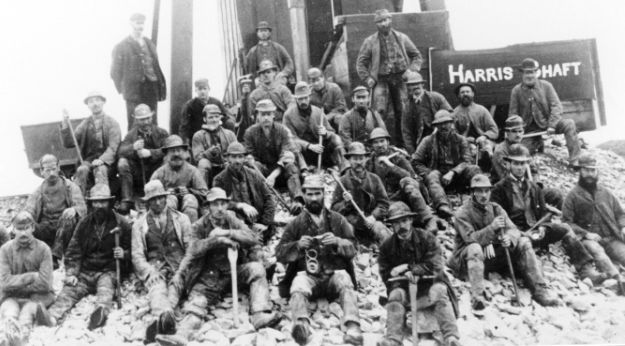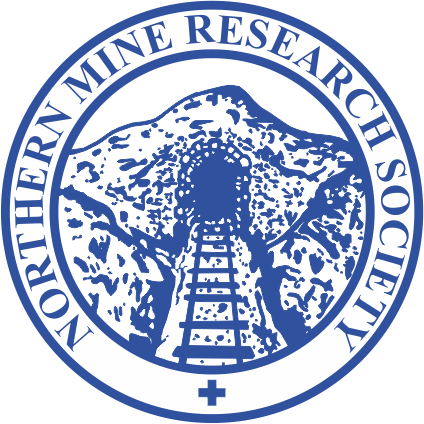
Harris Shaft 1892
On Burhill and Craven Moor, near Stump Cross Caverns, veins outcrop in the limestone and were worked in monastic times, when they were owned by Bolton Priory. Large numbers of the older shafts have been obliterated by 20th century reworking of the dumps for fluorspar, but in places a few survive. Most of what remains is, however, from the 18th and 19th centuries.
The Burhill Mining Company, formed in 1857, sank a series of deep shafts on Old Vein, and drove Hopewell Level in Nebcastle Rake. Its mines produced about 82 tons of lead per year, but closed in the slump of the early 1870s. Some ore was produced when prices rose between 1877 and 1881.
In 1963 the Clay Cross Company, from near Chesterfield, began working the Burhill area for fluorspar. It sank inclines on Nebcastle Rake and Wright Vein, which both remain as gashes on the hillside. The mines closed in 1967, and only a little work has been done since.
The Craven Moor area has natural caverns, which give surface water easy access into mine workings. Mines which went below the caves were soon flooded, especially in wet weather. By the mid 19th century the shallow ore was gone and so the Craven Moor Mining Company began driving the Blackhill Level, on Blackhill Vein, to drain the veins. It found a number of good oreshoots, but did not reach its destination because an agreement was made to drive up a branch of Cockhill Level, from Bewerley, instead. Called the 56 fathom joint level it was deeper than Blackhill Level.
The Craven Cross mine, near Keld Houses, was rich, but in 1784 it was flooded out at a depth of 43 fathoms. The owner, William Wood, installed a Boulton & Watt steam engine to pump it dry, but it did not begin work until late 1785. The engine was idle by 1795 and was moved to a colliery near Durham. In 1803 the 56 fathom joint level was driven to this mine from Cockhill Level. Its depth allowed mines in this area to keep working into the 1880s.
In the 1890s an aqueduct tunnel, for Bradford’s water supply from its Nidderdale reservoirs, was driven under Greenhow. It was even deeper than Cockhill Level and it proved that the veins carried ore below the old workings. In the 1920s and 30s, therefore, there was a brief resumption of lead and fluorspar mining, based on one of the air shafts to the aqueduct.
See: Gill, M.C. The Greenhow Mines (British Mining No.60, 1998)
Return to previous page
